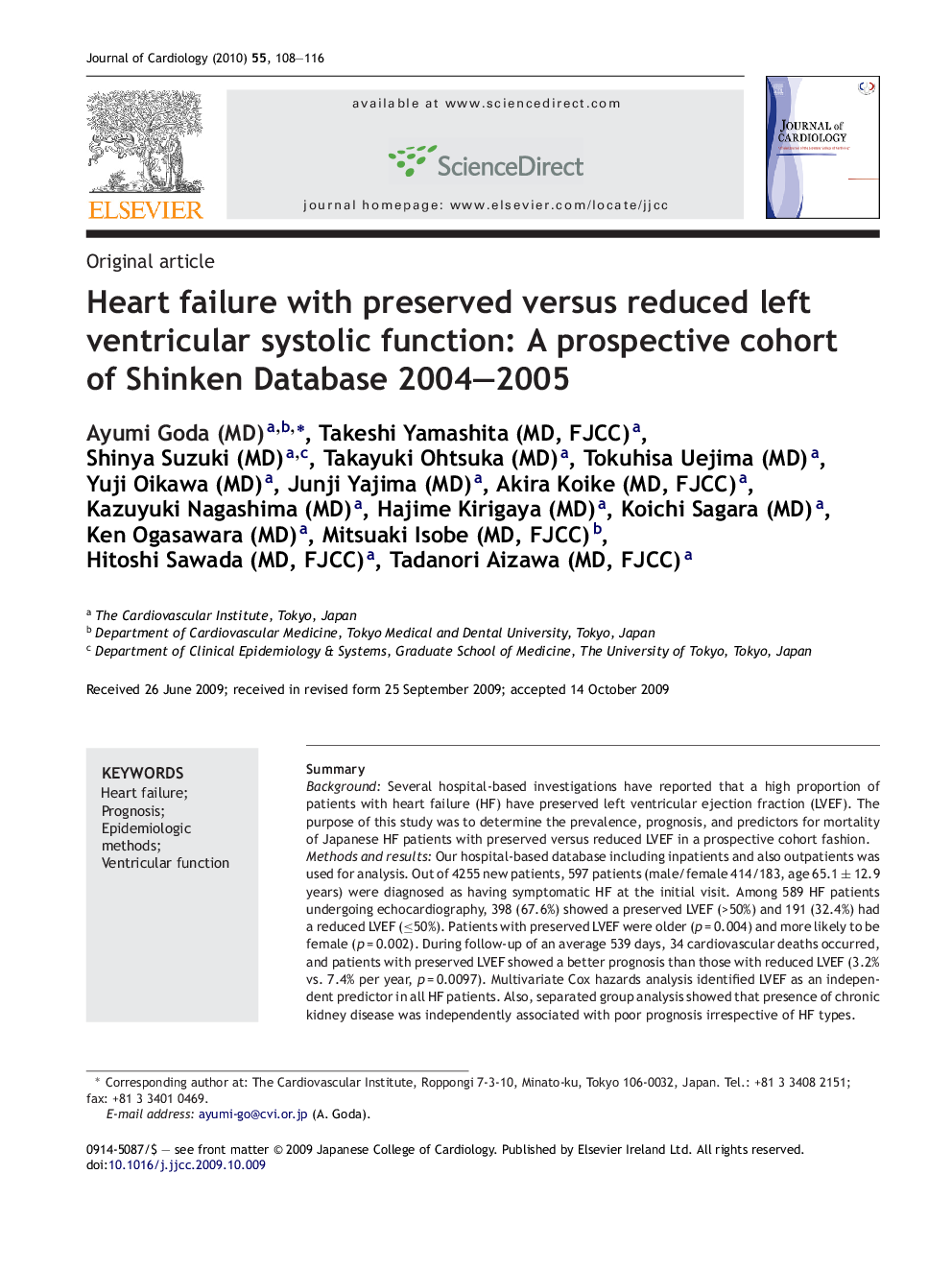| Article ID | Journal | Published Year | Pages | File Type |
|---|---|---|---|---|
| 2963480 | Journal of Cardiology | 2010 | 9 Pages |
SummaryBackgroundSeveral hospital-based investigations have reported that a high proportion of patients with heart failure (HF) have preserved left ventricular ejection fraction (LVEF). The purpose of this study was to determine the prevalence, prognosis, and predictors for mortality of Japanese HF patients with preserved versus reduced LVEF in a prospective cohort fashion.Methods and resultsOur hospital-based database including inpatients and also outpatients was used for analysis. Out of 4255 new patients, 597 patients (male/female 414/183, age 65.1 ± 12.9 years) were diagnosed as having symptomatic HF at the initial visit. Among 589 HF patients undergoing echocardiography, 398 (67.6%) showed a preserved LVEF (>50%) and 191 (32.4%) had a reduced LVEF (≤50%). Patients with preserved LVEF were older (p = 0.004) and more likely to be female (p = 0.002). During follow-up of an average 539 days, 34 cardiovascular deaths occurred, and patients with preserved LVEF showed a better prognosis than those with reduced LVEF (3.2% vs. 7.4% per year, p = 0.0097). Multivariate Cox hazards analysis identified LVEF as an independent predictor in all HF patients. Also, separated group analysis showed that presence of chronic kidney disease was independently associated with poor prognosis irrespective of HF types.ConclusionsThis prospective cohort study identified prevalence and prognosis of HF in Japanese in- and outpatients, where patients with preserved LVEF showed a better prognosis than those with reduced LVEF.
